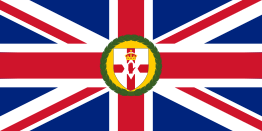James Hamilton, 3rd Duke of Abercorn facts for kids
Quick facts for kids
The Duke of Abercorn
|
|
|---|---|

Lord Abercorn, c. 1894
|
|
| Governor of Northern Ireland | |
| In office 12 December 1922 – 6 September 1945 |
|
| Monarch | |
| Preceded by | None (office created) |
| Succeeded by | The Earl Granville |
| Personal details | |
| Born | 30 November 1869 Hamilton Place, Piccadilly, London |
| Died | 12 September 1953 (aged 83) London, England |
| Nationality | British |
| Political party | Unionist |
| Spouse | Lady Rosalind Bingham |
| Children |
|
| Parents |
|
James Albert Edward Hamilton, 3rd Duke of Abercorn (born November 30, 1869 – died September 12, 1953) was an important British noble and politician. Before he became the Duke of Abercorn in 1913, he was known as the Marquess of Hamilton. He made history as the very first Governor of Northern Ireland. He held this important job from 1922 to 1945. He was also the great-grandfather of Diana, Princess of Wales.

Contents
Early Life and Education
James Hamilton was born in London, England, on November 30, 1869. His father was James Hamilton, 2nd Duke of Abercorn. His godfather was the Prince of Wales, who later became King Edward VII. His mother, Lady Mary Anna, was the daughter of the 1st Earl Howe.
He went to a famous school called Eton. After school, he joined the army. He first served in the Royal Inniskilling Fusiliers until 1892. Then, he joined the 1st Life Guards. Later, he became a major in the North Irish Horse.
In 1901, he went on a special trip with his father. Their job was to tell the governments of Denmark, Sweden, Norway, Russia, Germany, and Saxony that King Edward VII was now the new King.
Political Career
In 1900, James Hamilton was elected as a politician for Londonderry City. He was a member of the Unionist party. Three years later, he got a government job called the Treasurer of the Household. He kept this job until 1905, when the government changed.
After that, he worked as a leader who helped organize his political party. In 1913, he became the 3rd Duke of Abercorn after his father passed away.
Governor of Northern Ireland
In 1922, a new role was created: Governor of Northern Ireland. James Hamilton was chosen to be the first person to hold this important position. He was the King's representative in Northern Ireland.
He also served as the King's representative for County Tyrone from 1917 until he died. He had also helped the King's representative in County Donegal.
The Duke of Abercorn was very popular as the King's representative in Northern Ireland. He was reappointed to the job in 1928 for a second term. In 1931, he was offered the chance to be the Governor General of Canada, but he said no. He was reappointed for a third term as Governor of Northern Ireland in 1934. He stayed in this role until he resigned in July 1945.
Honors and Awards
In 1922, the Duke of Abercorn was made a Knight of the Most Illustrious Order of Saint Patrick. This was a very special honor. Six years later, he became a Knight of the Most Noble Order of the Garter. This is one of the highest honors in the United Kingdom.
In 1928, he also received an honorary degree from the Queen's University of Belfast. In 1945, he received the Royal Victorian Chain. In the same year, he became a member of the Privy Council.
Family Life
The Duke of Abercorn married Lady Rosalind Cecilia Caroline Bingham on November 1, 1894. They were married at St. Paul's Church in Knightsbridge, London. Lady Rosalind was the only daughter of the 4th Earl of Lucan.
They had five children together: three daughters and two sons.
- Lady Mary Cecilia Rhodesia Hamilton (1896–1984)
- Lady Cynthia Elinor Beatrix Hamilton (1897–1972). She married Albert Edward John Spencer. Their son was the grandfather of Diana, Princess of Wales. This means the Duke of Abercorn was Princess Diana's great-grandfather.
- Lady Katherine Hamilton (1900–1985)
- James Edward Hamilton (1904–1979), who became the 4th Duke of Abercorn.
- Lord Claud David Hamilton (1907–1968). He worked as a lawyer.
The Duke of Abercorn passed away at his home in London in 1953. He was buried at Baronscourt in County Tyrone.

